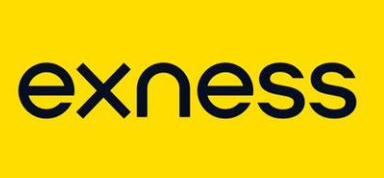The Quick Ratio, or Acid-Test Ratio, is an important financial measure. The Quick Ratio Formula helps assess a company’s short-term liquidity. It measures a company’s ability to meet its immediate liabilities using its most liquid assets. The quick ratio is different from the current ratio. It does not include inventory or prepaid expenses. Instead, it focuses on assets that can be quickly turned into cash.
Quick Ratio Formula
Quick Ratio=Quick AssetsCurrent Liabilities
\text{Quick Ratio} = \frac{\text{Quick Assets}}{\text{Current Liabilities}}
Quick Ratio=Current LiabilitiesQuick Assets
What Are Quick Assets?
Quick assets are very liquid assets. They can be turned into cash quickly, usually without losing value. These include:
- Cash and Cash Equivalents: Physical cash, bank balances, and short-term investments.
- Marketable Securities: Easily tradable securities like stocks and bonds.
- Accounts Receivable (Net): Money owed to the company by its customers after accounting for doubtful debts. Use the Quick Ratio Formula to see how these assets ensure liquidity.
Excluded Assets:
- Inventory: Considered less liquid as it may not be sold quickly without a significant discount.
- Prepaid Expenses: Payments made in advance for services or goods that cannot be converted to cash.
What Are Current Liabilities?
Current liabilities are the company’s financial obligations that must be settled within a year. These include:
- Accounts Payable
- Short-Term Debt
- Accrued Expenses
- Other Current Liabilities
How to Calculate the Quick Ratio
To calculate the quick ratio, follow these steps:
- Determine Quick Assets: Add up cash, marketable securities, and accounts receivable to apply the Quick Ratio Formula.
- Identify Current Liabilities: Sum up all short-term obligations.
- Apply the Formula: Divide the total quick assets by current liabilities.
Example Calculation
Scenario:
A company has the following financial data:
Cash: $50,000
Marketable Securities: $30,000
Accounts Receivable: $40,000
Inventory: $20,000
Prepaid Expenses: $10,000
Current Liabilities: $100,000
Step 1: Calculate Quick Assets
Quick Assets=Cash+Marketable Securities+Accounts Receivable
\text{Quick Assets} = \text{Cash} + \text{Marketable Securities} + \text{Accounts Receivable}
Quick Assets=Cash+Marketable Securities+Accounts Receivable
Quick Assets=50,000+30,000+40,000=120,000
\text{Quick Assets} = 50,000 + 30,000 + 40,000 = 120,000
Quick Assets=50,000+30,000+40,000=120,000
Step 2: Apply the Quick Ratio Formula
Quick Ratio=Quick AssetsCurrent Liabilities
\text{Quick Ratio} = \frac{\text{Quick Assets}}{\text{Current Liabilities}}
Quick Ratio=Current LiabilitiesQuick Assets
Quick Ratio=120,000100,000=1.2
\text{Quick Ratio} = \frac{120,000}{100,000} = 1.2
Quick Ratio=100,000120,000=1.2
Interpretation:
The company has $1.20 in liquid assets for every $1.00 of current liabilities, indicating healthy short-term liquidity.
Interpretation of the Quick Ratio
- Quick Ratio > 1: The company can comfortably cover its current liabilities with its liquid assets.
- Quick Ratio = 1: The company has just enough liquid assets to meet its current obligations, based on the Quick Ratio Formula.
Why is the Quick Ratio Important?
The quick ratio shows how healthy a company is in the short term using the Quick Ratio Formula. It helps stakeholders see if the company can meet its immediate obligations. This is done without depending on inventory or other assets that are harder to sell. It is especially useful in industries with slow-moving inventory or during economic downturns when liquid assets are vital.
Quick Ratio vs. Current Ratio
While both ratios measure liquidity, the quick ratio is more stringent:
- Current Ratio: Includes all current assets, including inventory and prepaid expenses.
- Quick Ratio: Focuses only on liquid assets, offering a more conservative view of liquidity. This precision is thanks to the Quick Ratio Formula.
Limitations of the Quick Ratio
- Industry Variations: Some industries, like retail, rely heavily on inventory, making the quick ratio less relevant.
- Timing Differences: Accounts receivable might not be immediately collectible, affecting the Quick Ratio Formula.
- Snapshot in Time: The ratio represents a single point in time and may not reflect long-term liquidity trends.
Conclusion
The Quick Ratio Formula is an important tool for checking a company’s short-term liquidity. It shows how well a company can meet its immediate financial obligations. The ratio focuses on liquid assets. This gives a clear view of financial health. It is very useful for investors, creditors, and financial analysts. While it is very effective, it should be used with other metrics. These include the current ratio and cash ratio for a complete analysis.
FAQs About Quick Ratio
1. What is a good quick ratio?
A quick ratio of 1 or higher is usually seen as good. It shows the company can pay its short-term debts.
2. How is the quick ratio different from the current ratio?
The quick ratio excludes inventory and prepaid expenses, while the current ratio includes all current assets.
3. Can the quick ratio be too high?
Yes, an excessively high quick ratio might indicate underutilization of resources or excess idle cash.
4. Is the quick ratio applicable to all industries?
No, industries with high inventory reliance, like retail, may find the quick ratio less relevant.
5. How often should the quick ratio be analyzed?
It is best analyzed quarterly or annually, depending on the company’s financial reporting cycle. Using the Quick Ratio Formula regularly helps in thorough financial analysis.
















